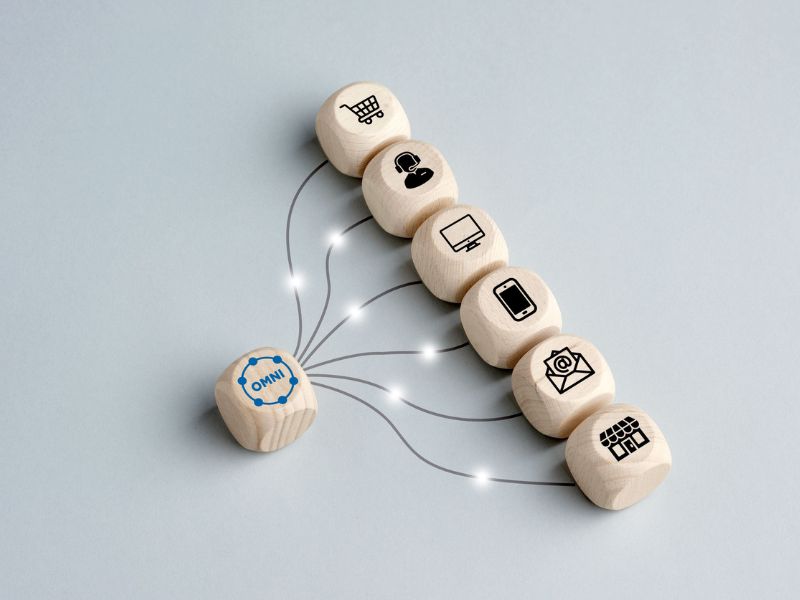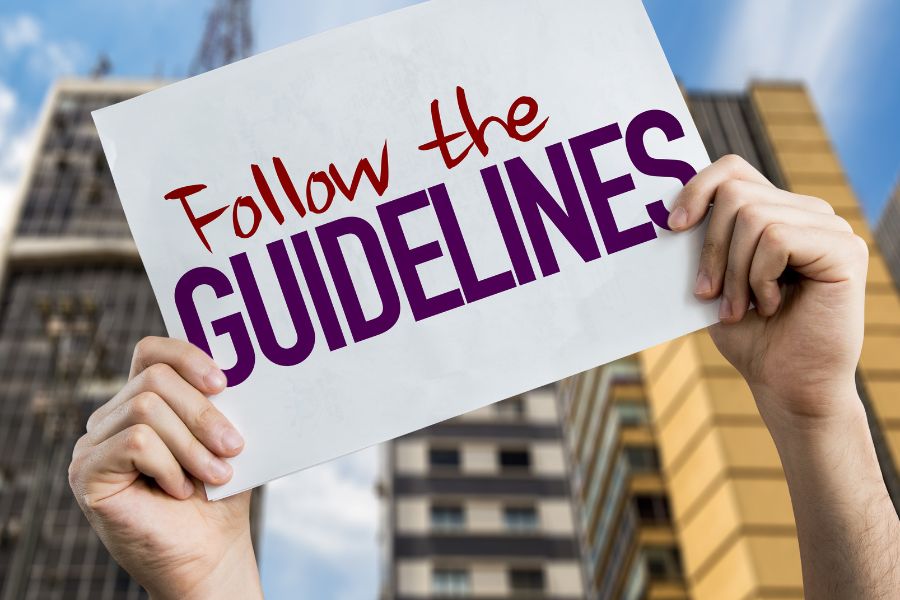Today, customers learn about brands in several ways. Some may stumble upon your business online, while others could discover it from company events or by physically visiting the store. Therefore, it’s crucial to utilize all possible marketing platforms to increase your chances of reaching your target audience.
One way to promote your products and brand across multiple platforms is through omnichannel marketing. It’s a customer-centered marketing approach integrating branding, messaging, and purchasing on various platforms and devices. This approach uses multiple tools, including customer engagement, operations, and social media marketing software such as WhatsApp marketing software, to curate an excellent buyer experience throughout the customer’s journey and across all your marketing channels.
So how do you market your business across multiple brands while maintaining a seamless customer experience? Here are five steps to help you.
1. Create A Buyer Persona
Creating a buyer persona first is essential to implement omnichannel marketing into your business. It is a research-based profile representing your target customer. It gives you a perspective on your ideal customers and how they make their purchasing decisions.
Furthermore, a buyer persona helps you understand your existing and prospective clients. Creating them simplifies the personalization of your products, services, and content to meet the needs of your consumers. For instance, it’s not enough to know your target audience is students. To appeal to them, you must gather more information about their needs, tastes, and preferences. It’s also vital to understand their backgrounds and their social and economic statuses. But how can you gather that information?
Generating a buyer persona requires you to conduct a thorough research about your customers. You can obtain the necessary information through interviews and surveys. For example, consider asking clients for feedback about products or services they have encountered or would like to try. This gives you insight into what they like and dislike, allowing you to make necessary adjustments.
Another approach to creating a buyer persona is to browse your contacts database to examine consumer trends. Consider how leads discover your brand and interact with your content to uncover their preferences and needs.
Generating a buyer persona also entails identifying the platforms they use daily, where they spend the most time, and what they do there. For example, if your customers spend more time on channels with short-form videos, unlike long-form ones, it could mean they have a short attention span.
With this data, creating content that captures their attention quickly and communicates within the shortest time possible would be best. You may also have to use more short-form videos. If prospects spend more time on visual-oriented platforms than written content, your target audience could be more into visuals. Consider using more photos and infographics to tell brand stories.
2. Assess The Buyer Platform Usage
Determining buyer platform usage enables you to map out customer journeys. A customer journey is the total interactions a consumer has with your business or brand across multiple channels. This may include becoming aware of your brand, verifying credibility, purchasing products, and recommending your company to prospective buyers.
Assessing buyer platform usage will require you to learn what they do on each platform. Do they only interact with content from people they follow, or are their preferences flexible? How long do they spend on video content as opposed to, say, blogs? How long do they spend on the marketing channels? On what type of content are the leads turning into conversions? Are clients leaving any reviews? Are the reviews good or bad, and why?
Answering the above questions will help you understand how your prospective customers interact with your brand on different marketing platforms. You can use these pieces of information to tailor a better customer journey. Moreover, assessing buyer platforms enables you to analyze what marketing strategies are working and on which channel and make the necessary changes.
3. Formulate Brand Guidelines
Brand guidelines are rules and standards that determine your business’s written, verbal, or visual communication framework. These standards keep your business image consistent across different marketing channels. Your brand must stay consistent across multiple platforms for easier brand recognition.
When establishing your brand guidelines, consider the following:
- Standard color and font
- Standard use of graphics and image styles
- Standard tone voice
- Use of the company’s logo
Besides enhancing brand recognition, these rules and standards help protect your company against miscommunication and misinterpretation. Use the guideline to stipulate who your brand is and what it’s about. Brand consistency across marketing media also helps to create a seamless omnichannel marketing experience for your customers.
4. Implement Omnichannel Personalization Strategies
Omnichannel marketing focuses on the needs and preferences of customers. What works for one buyer may not always work for the next. It would be best to segment your audience and determine their behaviors, so you can fulfill each of their needs.
Take for example, customers have different reasons why they won’t make a purchase even after loading a cart. Some leave it pending until they have enough money to clear it. Others neglect their carts because they’ve found alternatives or changed their minds. Getting each of these customers to return to the website and complete their purchase requires implementing omnichannel personalization strategies.
One of the effective omnichannel personalization strategies you can implement is the use of marketing automation tools. These tools can segment your audience based on various criteria, such as demographics, behavioral patterns, and preferences. Using this data, personalized messages and marketing campaigns are generated. This will help you automate marketing on multiple channels while maintaining personalization.
Ready to transform your marketing efforts by building omnichannel marketing strategy today?
Contact Growth Hackers
5. Test Your Strategies
Experimenting is one of those marketing fundamentals that you cannot overlook. Gaining a good understanding of your customer base is not enough when implementing omnichannel marketing. It’s also critical to test your strategies and verify their effectiveness. This means executing them across your channels. These include your brand’s social media pages, your website’s blog, print media, and online journals. Besides ascertaining the efficiency of your approaches, this tip helps you collect more information regarding your audience. You can use this information to better your Omni-channel marketing strategies.
6. Evaluate Your Customer’s Experience And Feedback
Customer behaviors will allow you to understand your audience’s experiences when engaging with your business. If you run e-commerce and a physical store, it’s important to consider online and offline customers’ behavior.
When evaluating your client’s experience consider factors like customer engagement, satisfaction, acquisition, retention, loyalty, and lifetime value. These metrics will help you determine the effectiveness of your marketing approaches.
If you attract new customers to your business but don’t retain them, it could mean the customers are dissatisfied with the quality of your service or even products. Therefore, it is crucial to seek feedback to find their pain points and what they care about. Use the information collected to provide a better experience that could enhance customer retention.
It’s impractical to depend on a single strategy to accomplish consistency across all channels. Therefore, integrating the above mentioned approaches is recommended for your business to flourish.
Don’t miss out on this powerful marketing approach. Start your omnichannel strategy now!
Benefits Of Omnichannel Marketing
The development of various technological advancements paved the way for new marketing platforms. This makes omnichannel marketing an effective strategy for businesses nowadays. Aside from allowing you to reach your target audience on multiple platforms and devices, here are some other benefits of omnichannel marketing:
Increased Brand Recognition and Loyalty
Consumers are big on purchasing products or paying for services that meet their needs. Omnichannel marketing fills this gap because it’s centered on customers. Thus, this marketing approach makes your business easily noticeable among consumers regardless of the channel.
Furthermore, omnichannel marketing focuses on promoting consistency and seamlessness. This helps your audience to have a unified perception of you. It also makes it easy to spot your brand on various channels, which gives you a competitive edge in your industry.
Consistency across all your channels allows your audiences to have the same experiences regardless of the avenue they use to interact with your brand. Consequently, they perceive you as credible and reliable, strengthening your brand reputation. Earning your customers’ trust increases your retention rate, enhancing brand loyalty.
Widened Customer Base
Implementing omnichannel marketing to your business also widens the customer base you’re able to reach. This approach leverages multiple channels. With this, you can reach the target audience you miss attracting on one platform on another one.
Increased Understanding Of Your Audience
Learning about your audience is essential in business as it makes it easier to satisfy their needs and grow. Omnichannel marketing requires you to collect information regarding your audience consistently to implement relevant approaches. This keeps you informed about your customers’ preferences and ensures you’re updated when their needs change. Consequently, you can use this information to retain customers and acquire more, thus growing your business.
Implementing Omnichannel Marketing Strategies to Your Business
Omnichannel marketing is a buyer-centered marketing approach that uses information about customer engagement to develop seamless customer experiences. There’re many ways to implement omnichannel marketing. These include generating buyer personas, assessing buyer platform usage, formulating brand guidelines, implementing omnichannel personalization strategies, and testing strategies.
Integrating these strategies yields numerous benefits. For starters, it individualizes customer experiences, increasing brand engagement and awareness and growing your customer base. Secondly, increasing brand recognition through omnichannel marketing enables you to earn your audience’s trust, enhancing brand loyalty. Furthermore, this marketing approach helps you collect more information about your audience, allowing you to understand them better. Consider implementing this approach for your business to enhance your chances of success.
Growth Hackers is a leading integrated marketing agency helping businesses from all over the world grow. There is no fluff with Growth Hackers. We help entrepreneurs and business owners implement omnichannel marketing, increase their productivity, generate qualified leads, optimize their conversion rate, gather and analyze data analytics, acquire and retain users and increase sales. We go further than brand awareness and exposure. We make sure that the strategies we implement move the needle so your business grow, strive and succeed. If you too want your business to reach new heights, contact Growth Hackers today so we can discuss about your brand and create a custom growth plan for you. You’re just one click away to skyrocket your business.







